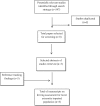Driving evaluation methods for able-bodied persons and individuals with lower extremity disabilities: a review of assessment modalities
- PMID: 26375567
- PMCID: PMC4557573
- DOI: 10.6061/clinics/2015(09)08
Driving evaluation methods for able-bodied persons and individuals with lower extremity disabilities: a review of assessment modalities
Abstract
Assessing the driving abilities of individuals with disabilities is often a very challenging task because each medical condition is accompanied by physical impairments and because relative individual functional performance may vary depending on personal characteristics.We identified existing driving evaluation modalities for able-bodied and lower extremity-impaired subjects (spinal cord injury patients and amputees) and evaluated the potential relationships between driving performance and the motor component of driving.An extensive scoping review of the literature was conducted to identify driving assessment tools that are currently used for able-bodied individuals and for those with spinal cord injury or lower extremity amputation. The literature search focused on the assessment of the motor component of driving. References were electronically obtained via Medline from the PubMed, Ovid, Web of Science and Google Scholar databases.This article compares the current assessments of driving performance for those with lower extremity impairments with the assessments used for able-bodied persons. Very few articles were found concerning "Lower Extremity Disabilities," thus confirming the need for further studies that can provide evidence and guidance for such assessments in the future. Little is known about the motor component of driving and its association with the other driving domains, such as vision and cognition. The available research demonstrates the need for a more evidenced-based understanding of how to best evaluate persons with lower extremity impairment.
Conflict of interest statement
No potential conflict of interest was reported.
Figures



References
-
- Peters B. Driving performance and workload assessment of drivers with tetraplegia: an adaptation evaluation framework. J Rehabil Res Dev. 2001;38((2)):215–24. - PubMed
Publication types
MeSH terms
LinkOut - more resources
Full Text Sources
Other Literature Sources
Medical

